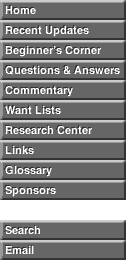

 The famous silver centered cent without the silver cent. This was struck in copper and/or billon, the latter often referred to as fusible alloy. Judd describes these as having obliquely reeded edges but all the examples I have seen have normal vertical reeding. To see images of all known examples, click here. The following examples are known: 1) Smithsonian - Unc. This is also the Judd 1st-7th edition plate coin. 2) Morris Specimen with plug added. MS61 Brown PCGS. Charles Morris (S.H. & H. Chapman, 4/1905), lot 361; later, James O. Sloss; William Mitkoff and Numismatics, Ltd.; Great Eastern Numismatic Association Sale (Pine Tree, 9/1974), lot 1272a; William T. Anton; private collection; Liberty Collection, Heritage 4/2012, StacksBowers 11/17, StacksBowers 3/23, illustrated below courtesy of Heritage.  Note: The Morris sale catalog states that the silver plug was added later with hand engraving done on both sides. Research by Len Augsburger, Joel Orosz, and Pete Smith and confirmed by Stu and Maureen Levine, Tony Lopez and Robert Rodriguez has determined that this is actually the case and that this was actually a J2/P2 that was altered years later. For more on this piece, click here. 3) Parmelee (New York Coin and Stamp, 6/1890), Steigerwalt, Hall, V. Brand (journal #49986:446), Armin Brand, Norweb (via Mehl 1/11/37), B/M 11/1988, A. Weinberg, Heritage 1/2019 FUN - PCGSAU53BN, illustrated at the top of this page, courtesy of Alan Weinberg, click on the thumbnail image to see an enlargement. 4) Wolcott family-I&L Goldberg 2/2005, Heritage 1/2008, Simpson Collection, Heritage 1/16 FUN - PCGSVF30, illustrated below courtesy of I&L Goldberg's Coins & Collectibles. 5) Levick (Cogan 12/1859 lot 219), Taylor (Cogan 5/1860 lot 611) where described as "the one cent rather indistinct", Seavey (Descriptive Catalog-William Strobridge, 6/1873), Parmelee, Maris-H.P. Smith, 6/1886, Garrett-JHU, Garrett IV-B/R 3/1981, Partrick-Heritage 1/15 FUN - NGCXF40, illustrated below courtesy of Heritage.  6) Lauder-Doyle Galleries 12/1983, Benson-I&L Goldberg, 2/2001, ANR 8/2006, Southern Collection, Simpson Collection, Heritage 1/12, StacksBowers 8/17 ANA - NGCF15 7) Paramount Century 4/1965, B/R RCR #20 (May 1974), Pine Tree Auctions 2/1975, ANA Museum - good 8) Harmer-Rooke 11/1969; Anton collection - good. 9) J.S. Jenks (H Chapman 12/1921), Newcomer (described as "dents at fraction, badly worn"), Lohr FPL, River Oaks-B/R 1176, Stacks 1/87, StacksBowers 2013 ANA - PCGS genuine net good 10) Fewsmith-Mason & Co. 10/1870, Appleton-MHS, but not there now Saul Teichman has discovered, since confirmed by Alan Weinberg and John Dannreuther that the Higgy-Boyd ANS-1956.163.25 example which shows a cracked obverse die and a plain edge, was struck or cast from copy dies using the Norweb coin as a host. Note: The genuineness of specimens 6-9 has been questioned in the past. #9 was returned to Stack's after the 1987 sale. Over a dozen examples are known of J1/P1 with the silver center with the Gschwend-Ellsworth-Garrett and Brock-Univ of Penn-Norweb coins, both uncirculated, being the two finest. There is also a recently discovered example, which was struck without the silver plug in it resulting in the coin having a small hole in the middle. It ex Stacks 3/95, Partrick-Heritage 1/15 FUN and is graded NGC62RB. We have not assigned it a separate Judd or Pollock number as we are not sure if this was deliberate or some kind of mint error in the production of the J1/P1 or is like the Morris piece above. For additional historical information on 1792 coinage, click here. |